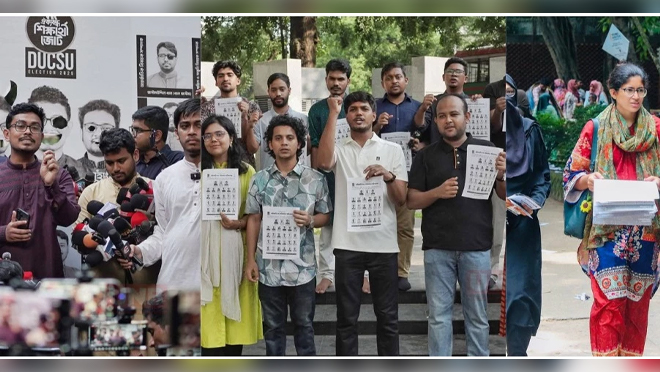The 2025 DUCSU Election's Digital Mirage
The 2025 DUCSU Election's Digital Mirage

The final days of the DUCSU 2025 election saw a dramatic shift in online engagement, but a new analysis reveals much of the apparent momentum was a carefully constructed mirage. A report from SharedToday exposes a phenomenon called “auto-turfing” — the use of coordinated, repetitive campaign posts to create the illusion of widespread support. This practice has cluttered the digital space, making it difficult to distinguish genuine popularity from manufactured waves.
Detecting the deception
Auto-turfing campaigns can be identified by several markers, according to the SharedToday report:
- Identical or near-identical posts shared by multiple accounts in short timeframes.
- Overuse of templated slogans and hashtags.
- Sharp engagement spikes on content with low diversity.
The turf-inflated race
In the final 24 hours of raw engagement, the GS race appeared dominated by two candidates, with a sudden swing in momentum. Meghmallar of the Left Alliance surged to 63.6% of engagement, while Shibir’s Farhad held 33.3%. Odhikar’s Sabina, once a frontrunner, collapsed to just 2.1%.
However, this surge was largely artificial. Over 70% of Meghmallar’s late engagement was turfing-driven, while 60-65% of Farhad’s was also the product of organised amplification.
The real race: organic engagement only
When turfing is stripped away, the true picture looks different. A “clean” analysis of organic engagement shows:
Organic VP race (two-week trend):
- Umama (Independent): ~40%
- Abidul (JCD): ~36%
- Sadiq (Shibir): ~22%
- Others: <3%
This suggests a close VP contest between Umama and Abidul, with Sadiq trailing.
Organic GS race (two-week trend):
- Sabina (Odhikar): ~38%
- Farhad (Shibir): ~34%
- Hamim (JCD): ~21%
- Meghmallar (Left): ~5%
- Others: ~2%
Here, Sabina leads. Farhad’s supposed late momentum collapses once turfing is excluded, revealing a smaller authentic base.
A contest of ideals and organisation
The DUCSU 2025 election remains a struggle between ideals and organisational might. Sentiments from the July movement are still strong, with students prioritising “change and accountability” (~25%) and “democratic participation” (~15%).
Yet panels like Odhikar and Independent, relying on organic grassroots engagement, struggled against the sheer weight of coordinated campaigns. JCD remained resilient with a mix of party discipline and authentic reach, while Shibir and the Left demonstrated their ability to generate artificial visibility bursts.
A mixed panel outcome now looks inevitable. The final result will show whether students’ authentic desire for change can outweigh the strategic digital influence of more organised panels.


